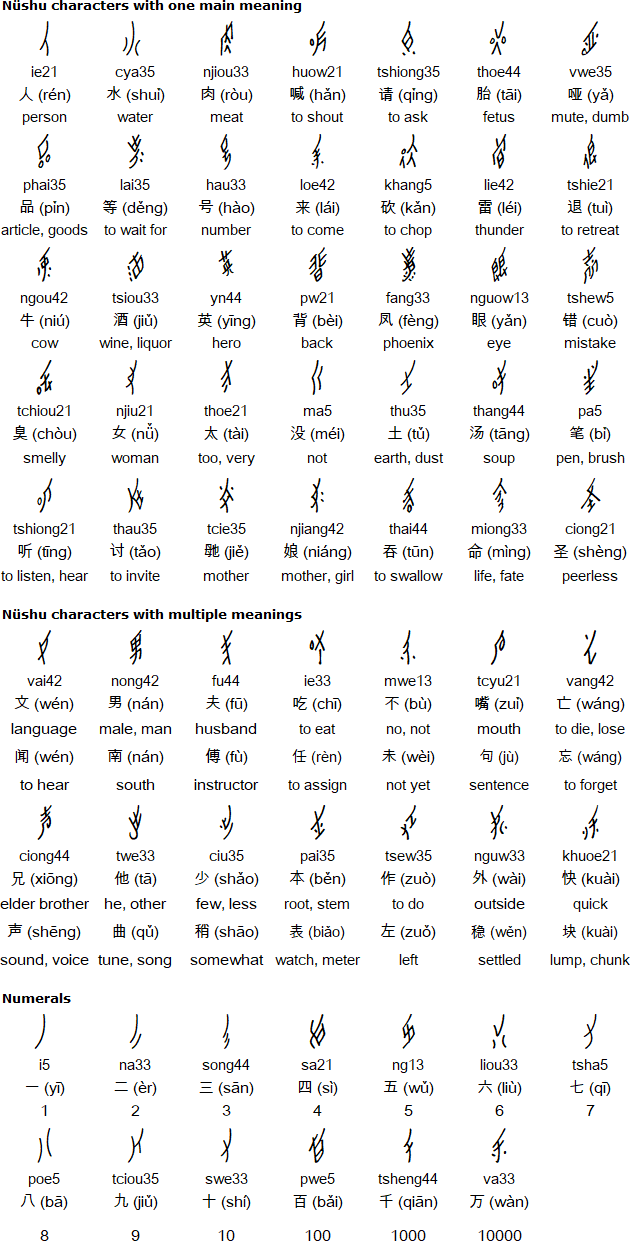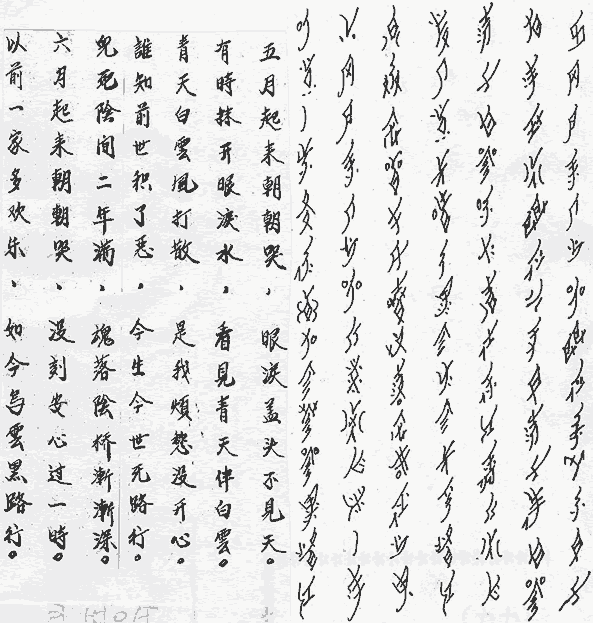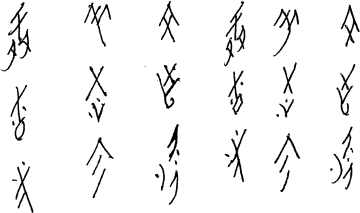the syllabic script used exclusively by women in Hunan, China (original) (raw)
Nüshu (女书)
Nüshu is a syllabic script created and used exclusively by women in Jiangyong Prefecture, Hunan Province, China. The women were forbidden formal education for many centuries and developed the Nüshu script in order to communicate with one another. They embroidered the script into cloth and wrote it in books and on paper fans.
Nüshu was mainly used in the creation of San Chao Shu (三朝書) or "Third Day Missives", cloth-bound booklets created by mothers to give to their daughters upon their marriage, or by woman to give to their close female friends. The San Chao Shu contained songs written in the Nüshu script expressing hopes and sorrow, and was delivered on the third day after a woman's marriage.
The last proficient user of Nüshu was Yang Huanyi [阳焕宜] (c. 1909-2004), who died in September 2004 at the age of 96-98 More details
Recently there has been a revival of interest in Nüshu and a number of women are studying it and using it again.
Notable features
- Type of writing system: syllabic
- Writing direction: vertical columns running from top to bottom and from right to left.
- Number of symbols: 600-700
- Many Nüshu characters are based on Chinese characters, while some are modelled on embroidery stitches and designs.
- Nüshu characters represent pronunciation, unlike Chinese characters, which represent pronunciation and meaning. One Nüshu character may be equivalent to one Chinese character, or to several.
- Nüshu was taught to women by their mothers or grandmothers.
Used to write
Xiangnan Tuhua (湘南土話) or 'Southern Hunanese Tuhua', a variety of Chinese spoken in the Xiao and Yongming River region of northern Jiangyong County in Hunan. Speakers of this language call it Dong language [tifɯə], and it is unintelligible with the Xiang dialect of southern Hunan.
Nüshu characters
Here are some Nüshu characters with their pronunciations, and the Chinese characters they are equivalent to, with their Mandarin pronunciations and meanings. Other Nüshu characters are available.

Download the Nüshu script chart (Excel)
Sample text in Nüshu with Chinese translation

Another Sample text in Nüshu

Translation
Beside a well,
one does not thirst.
Beside a sister,
one does not despair.
Nüshu text by Professor Zhao Liming, via Tim Brookes at The Endangered Alphabets Project
Videos about Nüshu
Links
Information about Nüshu
http://en.wikipedia.org/wiki/Nüshu_script
https://courier.unesco.org/en/articles/nushu-tears-sunshine
https://www.bbc.com/travel/article/20200930-nshu-chinas-secret-female-only-language
Online Nushu Dictionary
https://nushuscript.org/en-US/
Nüshu fonts
https://fonts.google.com/noto/specimen/Noto+Traditional+Nushu
https://fonts.google.com/noto/specimen/Noto+Sans+Nushu
Syllabaries
Afaka,Bamum,Caroline Island Script,Celtiberian,Cherokee,Cypriot,Dunging (Iban),Eskayan,Hiragana,Iberian,Katakana,Kpelle,Loma,Mende (Kikakui),Mwangwego, Nüshu,Nwagụ Aneke,Vai,Yi,Yugtun
Page last modified: 27.08.24
[top]
You can support this site by Buying Me A Coffee, and if you like what you see on this page, you can use the buttons below to share it with people you know.
If you like this site and find it useful, you can support it by making a donation via PayPal or Patreon, or by contributing in other ways. Omniglot is how I make my living.
Note: all links on this site to Amazon.com


[top]


